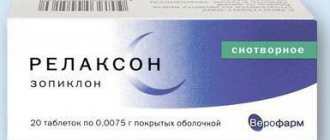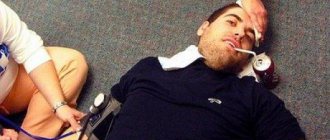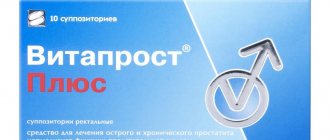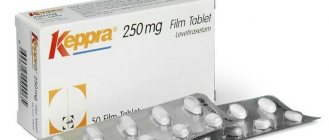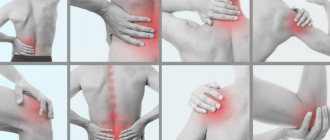Pharmacological action of Valium
The active substance of Valium, diazepam, has a pronounced sedative, muscle relaxant, hypnotic and anticonvulsant effect. During therapy, blood vessels dilate, resulting in a decrease in blood pressure. The drug is effective for the treatment of convulsive paroxysms associated with epilepsy, obsessive and phobic disorders, and sleep disorders.
The medication is used orally, intravenously and intramuscularly, with a sedative effect developing most quickly after intravenous administration (within a few minutes). According to the instructions, Valium has a stable therapeutic effect after 2-7 days of use. When using the medication against the background of withdrawal syndrome that develops with chronic alcoholism, the medication helps get rid of hallucinations and reduce the severity of other symptoms - tremor, agitation and delirium.
Kinetics
The medication "Valium", analogues of which are listed below, is absorbed from the gastrointestinal tract (when taken orally). In this case, absorption occurs by 75%, and the maximum concentration is reached after 1.5 hours.
The biological transformation of this medicine occurs in the liver. In this case, active metabolites with a half-life are formed. When prescribing the medication to infants, the effect is achieved after 30 hours, and for elderly and adults – after 100 and 48 hours, respectively. In case of liver pathologies, this indicator is extended to 4 days.
The drug in question is excreted from the human body mainly by the kidneys (90%) in the form of conjugates, as well as unchanged (2%) and together with feces (8%).
Indications for use of Valium
Valium solution, dragees and tablets are prescribed according to the instructions for the treatment of:
- Anxiety disorders (usually as part of a combination treatment);
- Dysphoria;
- Insomnia;
- Skeletal muscle spasm;
- Tension headaches;
- Spastic conditions that are associated with damage to the spinal cord or brain, for example, tetanus, athetosis, cerebral palsy;
- Rheumatic pelvispondyloarthritis, myositis, arthritis, bursitis, progressive chronic polyarthritis;
- Arthrosis, accompanied by tension in the skeletal muscles;
- Vertebral syndrome;
- Angina pectoris;
- Alcohol withdrawal syndrome, including tension, anxiety, agitation, tremor and transient reactive states.
As part of complex therapy, Valium tablets are usually used to treat:
- Arterial hypertension;
- Meniere's disease;
- Peptic ulcer of the stomach and duodenum;
- Status epilepticus;
- Psychosomatic disorders in gynecology and obstetrics, including gestosis and menopausal and menstrual disorders;
- Eczema and other diseases that are accompanied by irritability and itching;
- Drug poisoning.
The medication is also used for premedication before operations and endoscopic procedures, general anesthesia.
Injections with Valium solution are used:
- When conducting medicinal preparation for general anesthesia;
- As a component of combined general anesthesia;
- As part of combination therapy in the treatment of myocardial infarction;
- In psychiatry and neurology in the treatment of motor agitation of various etiologies;
- In paranoid-hallucinatory states;
- To relieve epileptic seizures;
- To facilitate labor;
- During premature birth at the end of the third trimester of pregnancy, as well as premature placental abruption.
Cost of the drug
As mentioned above, you can’t buy Valium Roche in Russia in every pharmacy. The cost of this medicine is approximately a thousand rubles (per package).
The price of this product in the UK and other European countries is usually about two hundred and fifty pounds sterling per thousand tablets (10 milligrams).
To purchase a drug in your city that will meet all safety and quality requirements, experts recommend contacting the help desk, where you will be provided with complete information about its availability in pharmacies and the best prices.
Contraindications
Contraindications to the use of Valium are:
- State of shock;
- Coma;
- Acute alcohol and drug poisoning;
- Hypersensitivity to active (diazepam) or excipients;
- Myasthenia;
- Acute respiratory failure;
- Severe chronic obstructive pulmonary disease.
Also, the medication is not prescribed to pregnant and lactating women. In pediatrics, the prescription of Valium according to the instructions is possible for children starting from six months.
Interaction with other medications
The drug "Valium" causes potentiation of the effects of alcohol, hypnotics, anticonvulsants, hypotensive and antihistamines, as well as neuroleptics, general anesthetics, tricyclic antidepressants, muscle relaxants and analgesics.
Psychostimulants and analeptics can significantly reduce the activity of the drug "Diazepam".
Antacids reduce the rate, but not the level, of absorption of this drug.
Microsomal oxidation inhibitors such as Cimetidine, Omeprazole, Ketoconazole, Fluoxetine and Fluvoxamine change the pharmacokinetics of the drug in question and also increase the duration of its clinical effects.
"Rifampicin" reduces con in the blood, and "Erythromycin" slows down its metabolism in the liver.
How to use Valium
The treatment regimen for Valium tablets depends on the disease and the patient’s response to the therapy. As a rule, the medication is used in the treatment of:
- Hypochondriacal and hysterical reactions, neurological degenerative diseases, neuroses, dysphoria and phobias - up to 3 times a day, 5-10 mg;
- Alcohol withdrawal syndrome - during the first day, 10 mg 3-4 times a day. In subsequent days, the dose should be halved without reducing the frequency of use;
- Menopausal, menstrual, psychosomatic disorders and gestosis - three times a day, 2-5 mg;
- Angina pectoris and high blood pressure – 2-5 mg three times a day;
- Vertebral syndrome - 10 mg four times a day with bed rest;
- Arthrosis, chronic polyarthritis – 5 mg. The frequency of use can vary from 1 to 4 times a day.
At the beginning of therapy for atherosclerosis, elderly people, as well as patients weakened by the disease, are prescribed Valium in a dosage not exceeding 2 mg twice a day.
For children 1-3 years old, Valium tablets are prescribed 1 mg, for children 3-7 years old - 2 mg, for older children - 3-5 mg. In some cases, for example, with severe epileptic seizures, motor agitation, spinal cord injuries, it may be necessary to administer the drug intravenously or intramuscularly.
The medication is administered intramuscularly for heart attack and preeclampsia at the beginning of treatment in an amount of 10 mg, after which Valium tablets are taken 5-10 mg one to three times a day.
To facilitate labor, after opening the cervix by 2-3 cm, 20 mg of the drug is administered intramuscularly. In case of premature birth, if placental abruption occurs prematurely, 20 mg of Valium is also administered. If necessary, the same dose is administered again after an hour. In addition, injections of Valium solution are used for anesthesia, in the treatment of spastic conditions of rheumatic origin and vertebral syndrome.
Form, packaging and composition
Valium is a drug that can be purchased in the form of an injection solution and also in tablet form. What is included in these products?
1 ml of injection solution contains 5 mg of diazepam. This medication goes on sale in 50 or 10 2 ml dark glass ampoules, placed in cardboard packs.
As for the tablets, they may contain 10 or 5 mg of diazepam, as well as the following additional ingredients: corn starch, anhydrous lactose, calcium stearate, gelatinized starch, dyes.
The drug "Valium" in tablet form is packaged in cardboard packs that contain cell blisters.
Side effects
At the beginning of therapy with Valium, according to reviews, the following may be observed:
- Drowsiness;
- Dizziness;
- Disorientation;
- Increased fatigue;
- Lethargy;
- Poor coordination of movements;
- Slowing of motor and mental reactions;
- Retrograde amnesia;
- Decreased attention.
In some cases, euphoria, muscle spasms, tremors, headache, depression, confusion, depression, dysarthria, weakness, hallucinations, catalepsy, agitation, fear, anxiety, irritability, insomnia and other mental and nervous system disorders may occur.
In addition, according to reviews, taking Valium can lead to the development of disorders from:
- Digestive system: in the form of heartburn; constipation; hiccups; nausea; vomiting; dry mouth;
- Cardiovascular system: in the form of tachycardia; reducing blood pressure; thrombosis
In especially severe cases, Valium, according to reviews, causes breathing and vision problems. Also, the medication can lead to addiction, and its abrupt withdrawal can lead to a worsening of the condition. Therefore, it is not recommended to purchase and take Valium without a prescription, and the treatment course must be fully agreed with the attending physician.
Drug overdose
An overdose of the drug in question is accompanied by such an unpleasant symptom as central nervous system depression. This phenomenon can have varying severity, ranging from drowsiness to coma. Also, when taking large dosages of the drug, the patient may experience hypotension, confusion and respiratory depression.
Treatment of such conditions, provided that the patient is conscious, involves the induction of vomiting and the use of activated charcoal. If the patient is unconscious, his stomach is lavaged with a tube, and symptomatic therapy, vital signs screening, and fluid administration are performed to increase diuresis.
To stop the patient's excessive agitation, barbiturates can be prescribed.
How to get rid of addiction
Dependence is rather psycho-emotional in nature, so traditional drug withdrawal in the case of Relanium is ineffective. Unlike substitution rehabilitation, the Narconon program is aimed at eliminating mental and psychological cravings for the drug and returning the patient to a healthy perception of himself and life. To do this, the following steps are used sequentially:
- non-pharmacological weaning with the help of specially trained staff;
- methods for restoring communication skills “Objective processes”;
- ways to eliminate the consequences of the toxic effects of drugs on the body (“New Life”) - exercises, special nutrition, taking mineral complexes, oils, niacin;
- support techniques for leaving a dangerous circle of friends, realizing one’s responsibility and liberation from the past - “Personal Values” and “Overcoming the Ups and Downs in Life”;
- procedures that develop the skill of creatively dealing with problems and classes for final drug cessation - “Changing conditions in life” and “Life skills”.
After the program, which usually lasts up to 10 weeks, the patient is freed from addiction and returns to a healthy life without relapses or breakdowns.
Share:
What is morphine
Vicodin - what is it?
Expert opinion
Reviews from doctors who use Valium in their practice.
I often use Valium in my practice to treat patients with alcohol addiction. I am personally convinced that the drug is highly effective, allows you to quickly relieve withdrawal symptoms and alleviate the patient’s condition.
Dorokhov A.O., narcologist
This medication has proven itself in the treatment of psychosomatic and post-traumatic disorders. I usually prescribe a course of the drug to my patients to achieve sedation, relieve anxiety and improve the quality of night sleep.
Nikitenko B.E., psychotherapist
Taken from specialized forums
The opinion of ordinary people is ambiguous.
I was in an accident where I received minor injuries to my limbs and head. After this incident, I began to suffer from insomnia and a constant feeling of fear.
The doctor prescribed me Valium three times a day. The first effect occurred within an hour after taking the medicine. I began to feel much calmer, and three days later I slept well for the first time in a long time. In general, I was satisfied with the drug, but the main thing is not to abuse it, otherwise it can become addictive.
Tatiana Osipova
I came across this medicine when I was treating my husband for alcoholism. While intoxicated, he experienced hallucinations and mental disorders. This drug was part of therapy for alcohol dependence.
From the words of the attending physician, I learned that it was this medication that helped my husband cope with mental disorders and restore normal consciousness.
Turina Evgeniya


